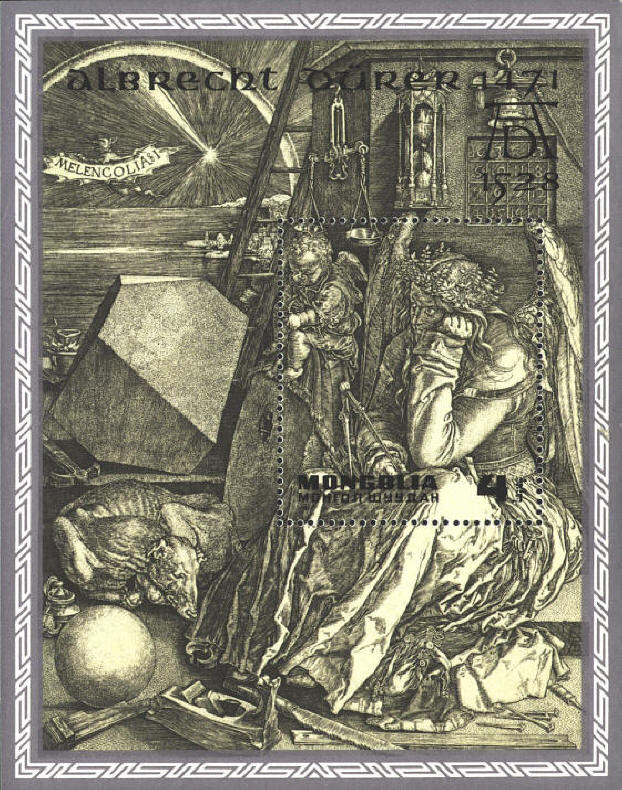|
Melencolia I ~ 1514
This engraving by Albrecht Dürer in 1415 is filled with a number of
items which may be symbols. I shall not try to interpret them, but
only identify and locate them. First, the black lettering at the top
of the sheet and at the bottom of the stamp are not part of Dürer’s
work. M is the figure of Melencoli.
The symbols include the following: bat, holding
the “title”
or “motto,” bell, top right,
book, under M's left elbow,
dividers, in M's left hand,
comet, upper left, crucible
with tongs, behind
truncated cube, dog, below
cube, figure of Melencoli,
right side, garland, around
M's head, hammer, beside
truncated cube, hourglass,
beside bell, “I,” on title,
inkwell, behind top of sphere,
keys, on M's belt,
ladder (seven runged), behind
truncated cube, magic square,
on wall upper right, molding curve,
in lower left corner, monogram & date,
at right margin under M’s seat, nails,
lower right corner, nozzle of a
bellows, just above lower right corner,
plane, lower left,
purse, on skirt of M’s apparel
right of leg, putto, sitting
on wheel right of truncated cube writing on his cuff (?),
rainbow, upper left,
ranunculus,in garland,
ruler, bottom right,
saw, button right,
scale, middle top,
scarf, under putto,
sphere, lower left corner,
title, top left (spelled uniquely
Melencolia I),
tongs, under skirt of M's
apparel, town, behind ladder,
truncated cube, left middle,
watercress, in M's garland,
wheel, under putto to right of
truncated cube.
There may be other items, but these are the ones I have
identified. According to Dürer’s annotation “keys mean power, purse
means wealth,” but he didn’t provide interpretations of any of the
other items.
In the magic square Dürer incuded the year, 1514, of the
engraving in the bottom row of numbers. As in magic squares, in general,
all lines, and columns add up to a common sum, in this case
34. On this magic square, however, each quadrant also adds up to 34,
as do the four squares in each corner, the four middle squares, and
both diagonals.




|
